Resource Quota¶
Shared resources do not necessarily mean that the shared users can use the shared resources without any restrictions. Admins, Kpanda Owners, and Workspace Admins can limit the maximum usage quota of a user through the "Resource Quota" feature in shared resources. If no restrictions are set, it means the usage is unlimited.
- CPU Request (Core)
- CPU Limit (Core)
- Memory Request (MB)
- Memory Limit (MB)
- Total Storage Request (GB)
- Persistent Volume Claims (PVC)
A resource (cluster) can be shared among multiple workspaces, and a workspace can use resources from multiple shared clusters simultaneously.
Resource Groups and Shared Resources¶
Cluster resources in both shared resources and resource groups are derived from Container Management. However, different effects will occur when binding a cluster to a workspace or sharing it with a workspace.
-
Binding Resources
Users/User groups in the workspace will have full management and usage permissions for the cluster. Workspace Admin will be mapped as Cluster Admin. Workspace Admin can access the Container Management module to manage the cluster.
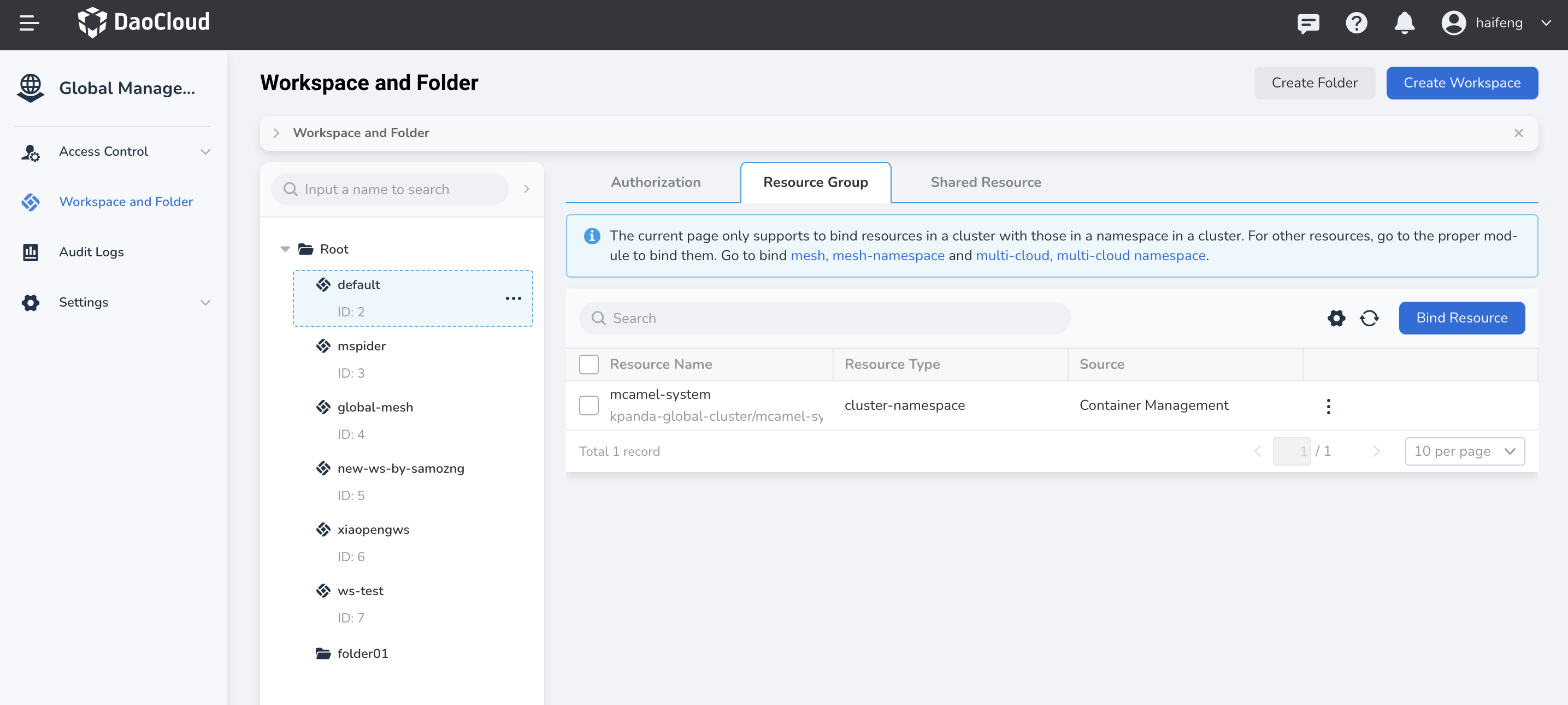
Note
As of now, there are no Cluster Editor and Cluster Viewer roles in the Container Management module. Therefore, Workspace Editor and Workspace Viewer cannot be mapped.
-
Adding Shared Resources
Users/User groups in the workspace will have usage permissions for the cluster resources, which can be used when creating namespaces.

Unlike resource groups, when sharing a cluster with a workspace, the roles of the users in the workspace will not be mapped to the resources. Therefore, Workspace Admin will not be mapped as Cluster admin.
This section demonstrates three scenarios related to resource quotas.
Creating Namespaces¶
Creating a namespace involves resource quotas.
-
Add a shared cluster to workspace ws01 .
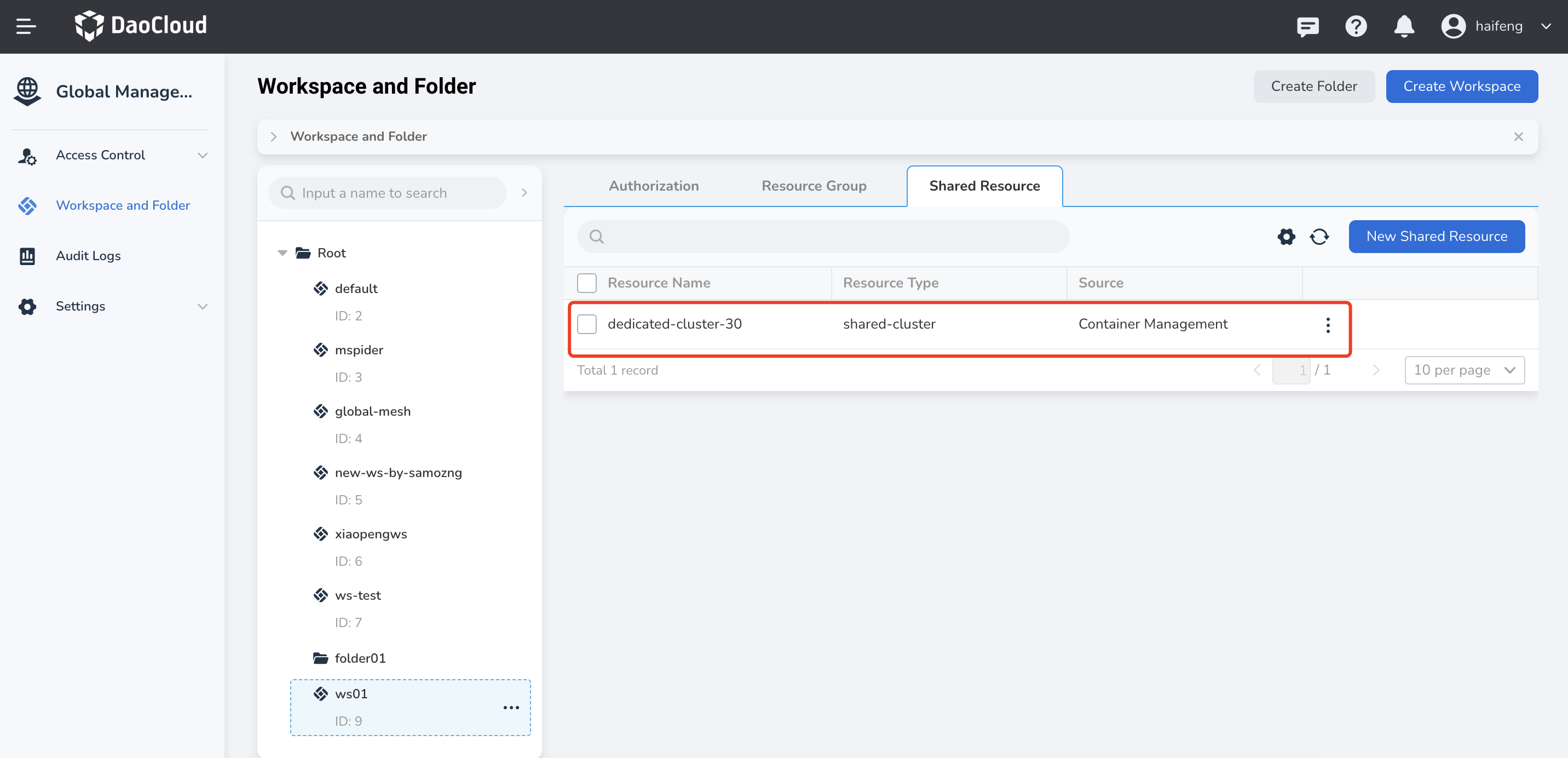
-
Select workspace ws01 and the shared cluster in the Workbench, and create a namespace ns01 .

- If no resource quotas are set in the shared cluster, there is no need to set resource quotas when creating the namespace.
- If resource quotas are set in the shared cluster (e.g., CPU Request = 100 cores), the CPU request for the namespace ns01 must be ≤ 100 cores for successful creation.
Binding Namespace to Workspace¶
Prerequisite: Workspace ws01 has added a shared cluster, and the operator has the Workspace Admin + Kpanda Owner or Admin role.
The two methods of binding have the same effect.
-
Bind the created namespace ns01 to ws01 in Container Management.
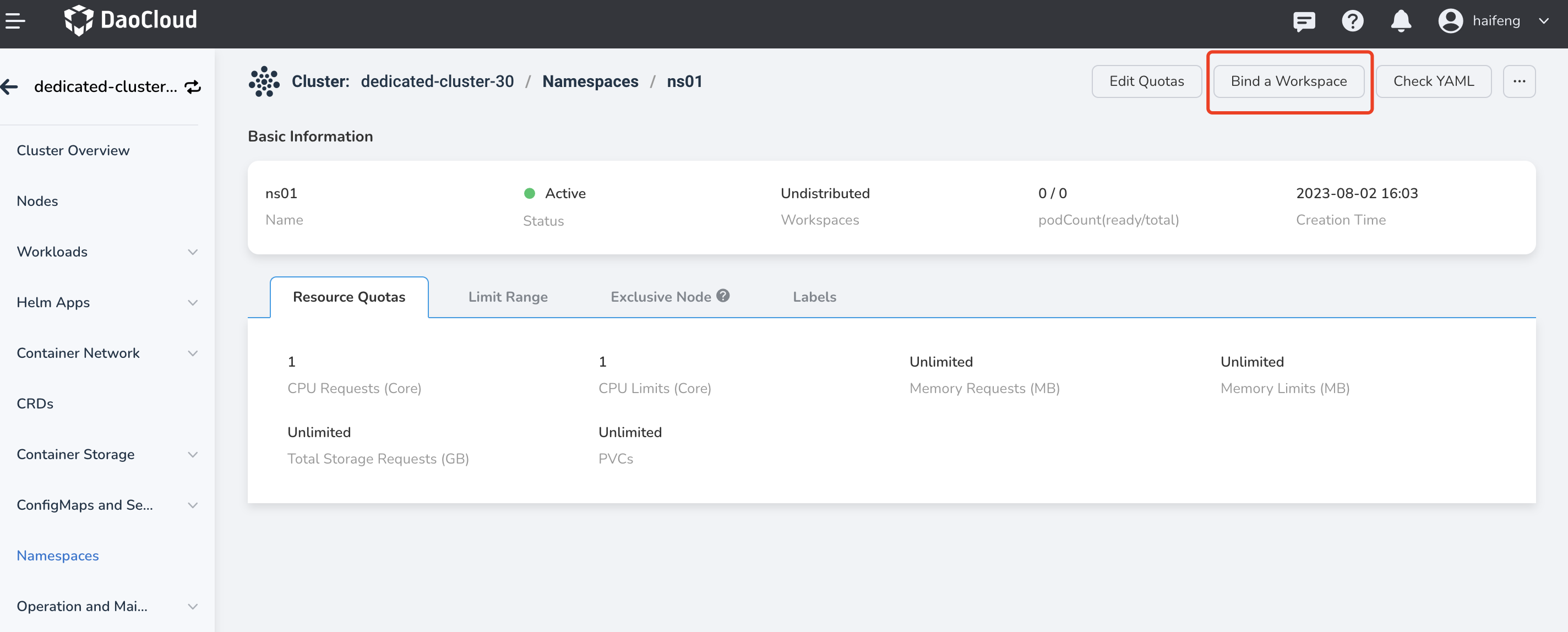
- If no resource quotas are set in the shared cluster, the namespace ns01 can be successfully bound regardless of whether resource quotas are set.
- If resource quotas are set in the shared cluster (e.g., CPU Request = 100 cores), the namespace ns01 must satisfy the condition CPU Request ≤ 100 cores for successful binding.
-
Bind the namespace ns01 to ws01 in Global Management.
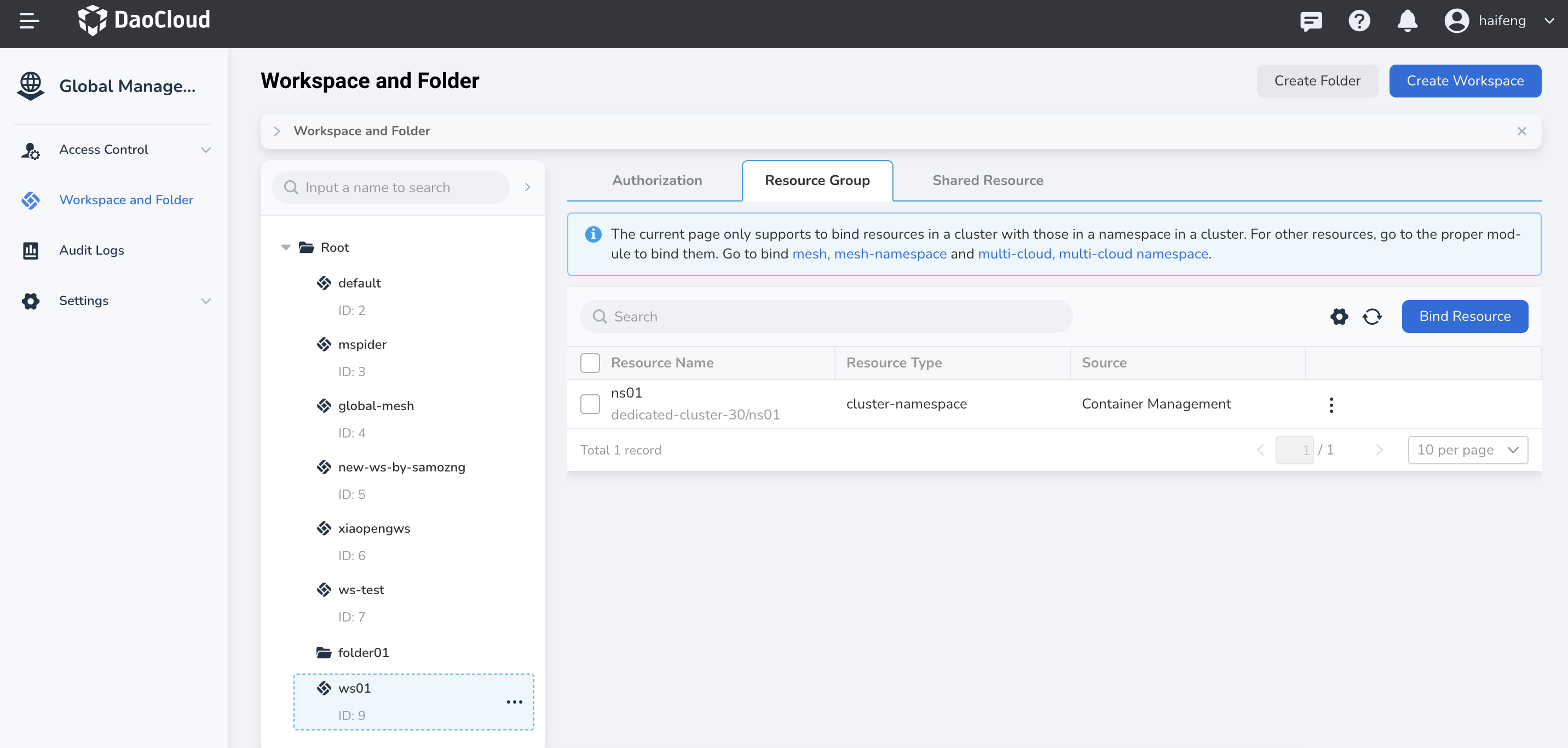
- If no resource quotas are set in the shared cluster, the namespace ns01 can be successfully bound regardless of whether resource quotas are set.
- If resource quotas are set in the shared cluster (e.g., CPU Request = 100 cores), the namespace ns01 must satisfy the condition CPU Request ≤ 100 cores for successful binding.
Unbinding Namespace from Workspace¶
The two methods of unbinding have the same effect.
-
Unbind the namespace ns01 from workspace ws01 in Container Management.
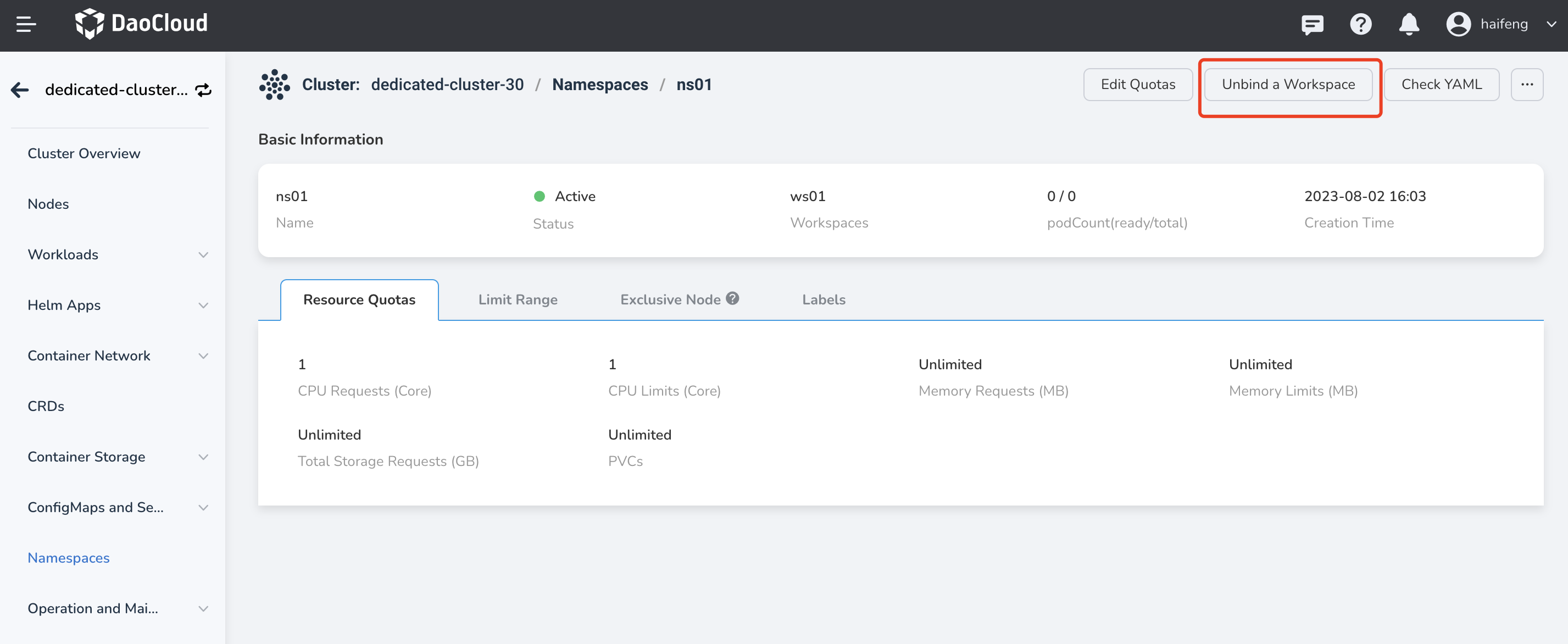
- If no resource quotas are set in the shared cluster, unbinding the namespace ns01 will not affect the resource quotas, regardless of whether resource quotas were set for the namespace.
- If resource quotas are set in the shared cluster (e.g., CPU Request = 100 cores) and the namespace ns01 has its own resource quotas, unbinding will release the corresponding resource quota.
-
Unbind the namespace ns01 from workspace ws01 in Global Management.
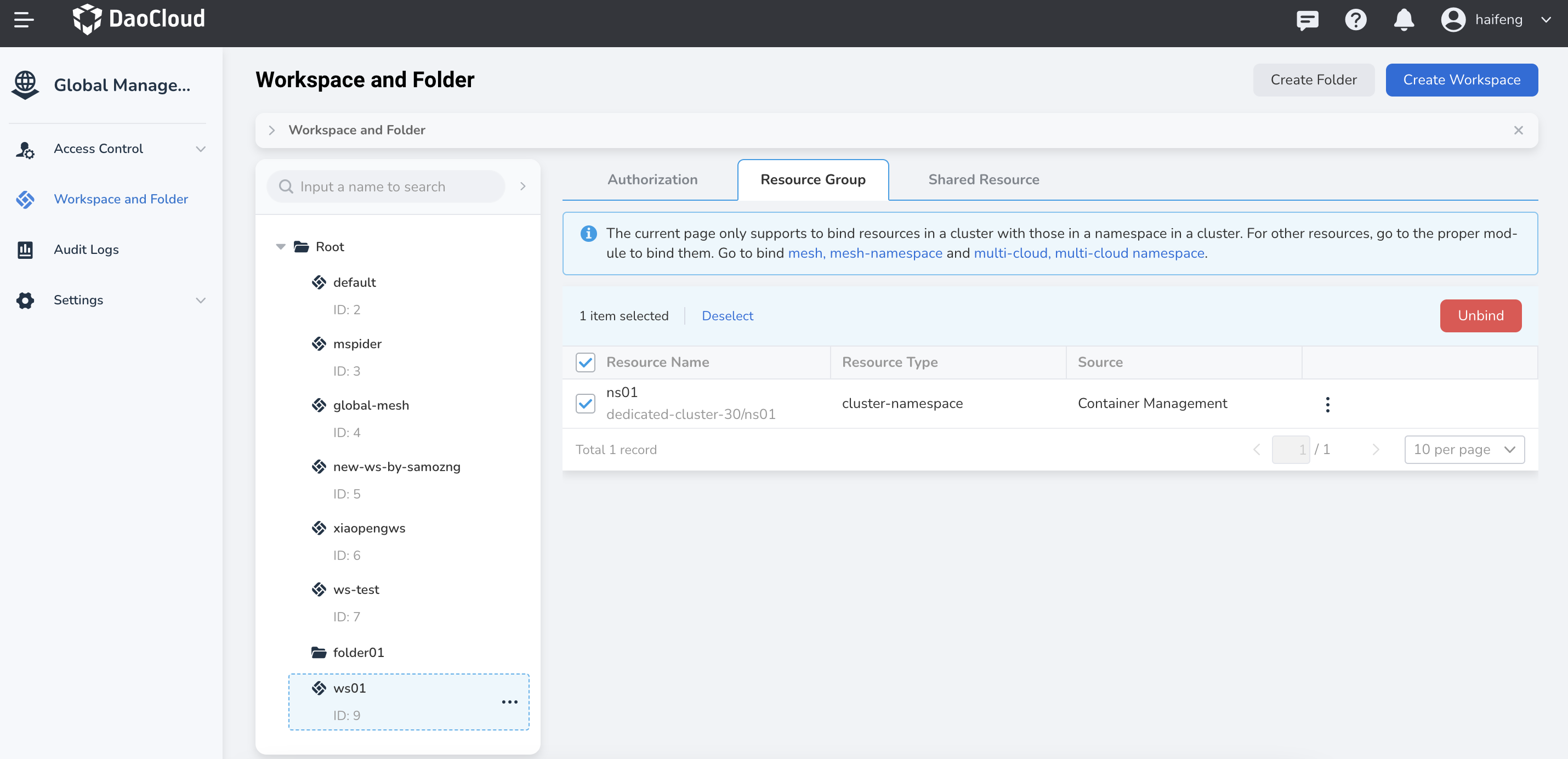
- If no resource quotas are set in the shared cluster, unbinding the namespace ns01 will not affect the resource quotas, regardless of whether resource quotas were set for the namespace.
- If resource quotas are set in the shared cluster (e.g., CPU Request = 100 cores) and the namespace ns01 has its own resource quotas, unbinding will release the corresponding resource quota.
In conclusion, resource quotas can be used to limit the maximum usage of shared resources by users. When creating namespaces or binding/unbinding namespaces to workspaces, the resource quotas set in the shared cluster need to be taken into consideration to ensure proper usage limits.